See What Was Found In The Gowanus Canal During The 4th Street Basin Dredging

[UPDATED: Thursday, June 7, 2018 at 11:15am] This post has been updated to include additional photographs provided by Jonathan Bream, an archeologist with AHRS.
GOWANUS – On Monday afternoon, the EPA presented some of the debris construction crews have recently excavated from the bottom of the Gowanus Canal during the pilot dredging project at the 4th Street Turning Basin.
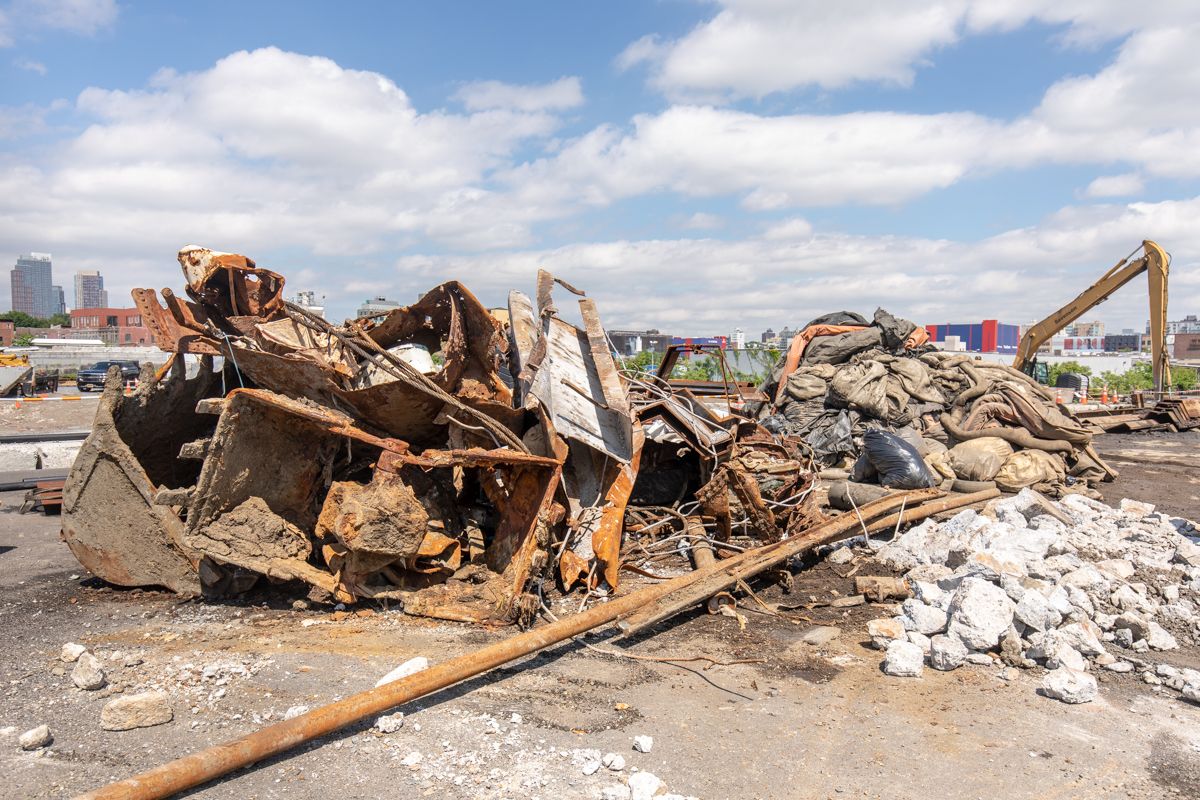
Rusted oversized pieces of machinery, plastic waste, rocks, and an anchor were displayed at the EPA’s staging site located between the Canal and Smith Street (and 5th & Huntington Streets) in Carroll Gardens.
“We removed a lot of debris from the basin while we were doing the dredging pilot and the archeological committee of the Gowanus Canal Community Advisory Group had an interest in seeing the debris,” said EPA Project Manager Christos Tsiamis. “We thought we’d provide the opportunity for members of the public to view what we have collected out of that stretch of water.”
“What we have here is only a small and miniscule portion of the debris that we have collected,” Tsiamis continued, explaining that many of the smaller objects found in the basin have been moved to a staging site in Clermont, New Jersey where the EPA is working with Clean Earth to separate the objects from the sediment and archeologists are examining the findings.
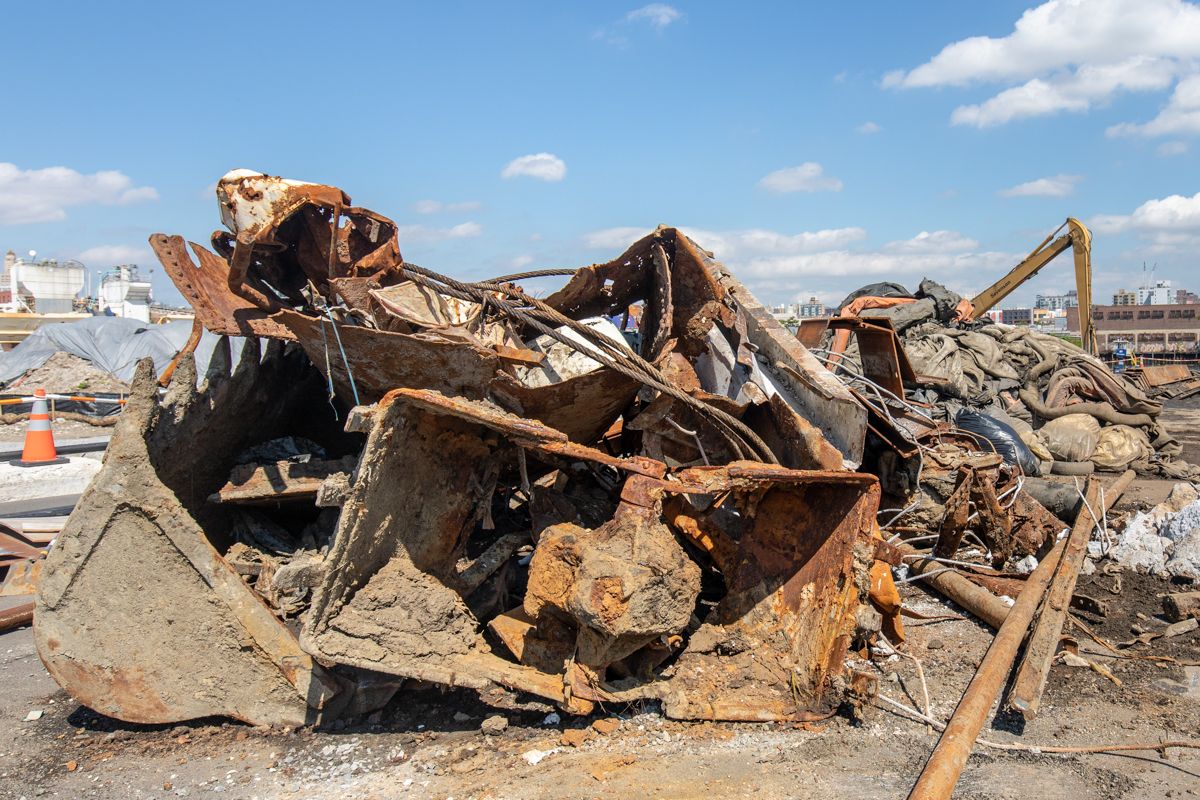
“The sediment is that contaminated material, the black mayonnaise that everyone is so familiar with, and as we’re excavating out that black mayonnaise we have all of these pieces lodged in it,” Natalie Loney, the EPA Community Involvement Coordinator, explained to BKLYNER. “As we lift this stuff out…this [gesturing to the debris] is the material that is separated out from that contaminated sediment. So you have these large pieces of metal, wood, and rubber that are not the contaminated sediment, but they have to be separated out in order for us to stabilize the sediment.” Once stabilized, the sediment is then used for landfill cover.
“You know that you’re going to find stuff because just the length of time that the canal’s been in existence and what has happened in terms of all the activity that took place along the canal, but to actually see it in person…. It’s always exciting to have a physical manifestation of what you thought might be there,” Loney said of the found objects. “I’m actually surprised how well-preserved some of this stuff is, particularly since it’s been resting in this contaminated material.”

“There are lots of things out there. As far as the significance or the importance of them, most of it is 20th century debris from the industry that was around the area and some of it still exists in the area,” explained Jonathan Bream, an archeologist with AHRS (Archeology & Historic Resource Services) who is monitoring the screening of the materials being recovered from the Canal. “The collection is much more important than each of the individual pieces. It tells us a lot about the history. We found quite a bit of important 20th century, and probably even some early 21st century, objects.”
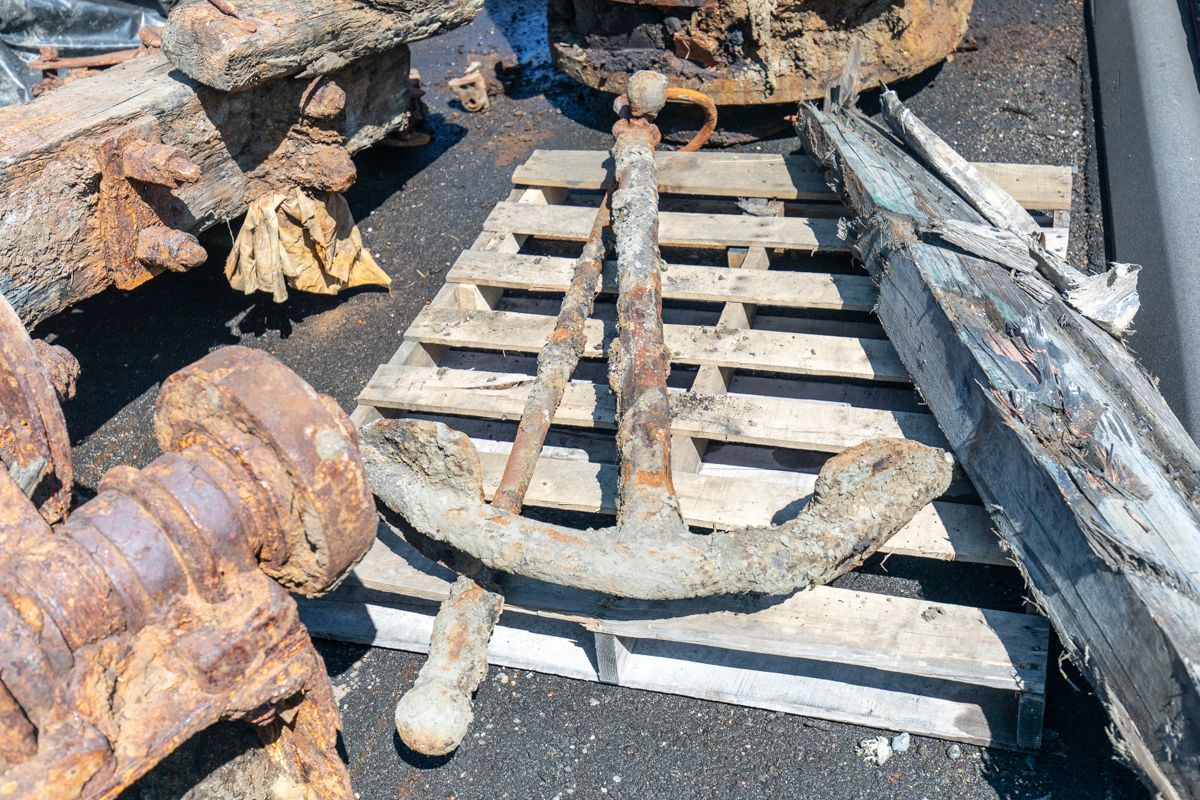
An anchor, made between the 1850s to the 1950s, Bream estimates, was recovered, as well as a dredging bucket, a heat exchanger, and part of a gantry truck, possibly from the Burns Brothers coal pockets or coal tipple. “Around the early 20th century they [Burns Brothers] had a refit and it looks like some of their [old] equipment that they used to unload the barges was just kind of dumped into the canal…that’s the way they did things in the 20th century,” Bream said.
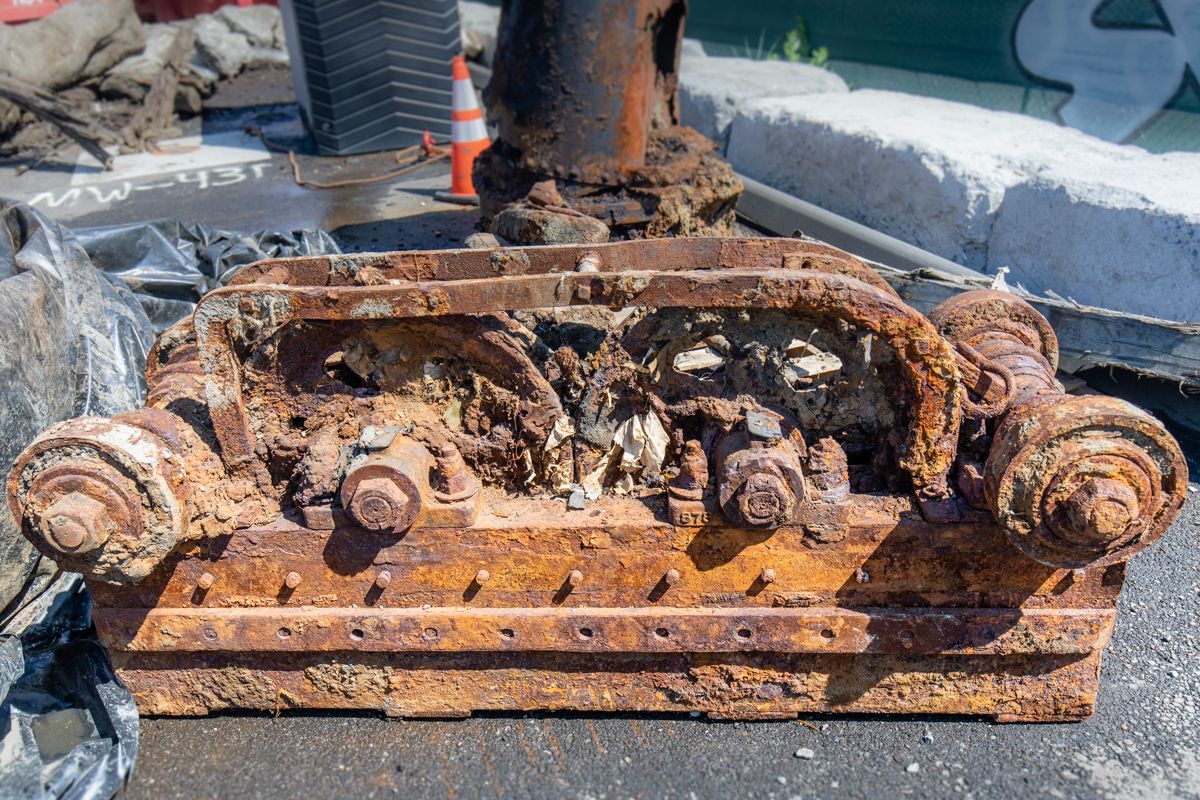
“I think it is definitely a positive step towards remediating the canal,” Loney said of the findings. “We’re really pleased not only with the amount of interest the community continues to have, but how successful we’ve been so far in meeting the goals of remediating the canal so we can return the canal to a much healthier state.”
When pressed by a member of the tour group, Bream insisted that no bodies or weapons were found during the dredging of the 4th Street Turning Basin. He recalled recovering what he thought might have been a cannonball, a possible remnant from the Battle of Brooklyn that was fought in the area in 1776, but the object was made of wood and was most likely a discarded bocce ball.

Other items discovered, but moved to the cleanup site in New Jersey, include a large number of unused stamped bricks (that likely fell off of barges transporting them), a bronze porthole (possibly from the S.S. Gay), and “two great big wagon wheels, 40 inches tall, 6 inches wide. They were wood, the hub was metal, but they were wood,” Bream said. “These were not regular wagon tires. These were to haul something heavy, so we’re assuming that they might have been used to haul the coal.”
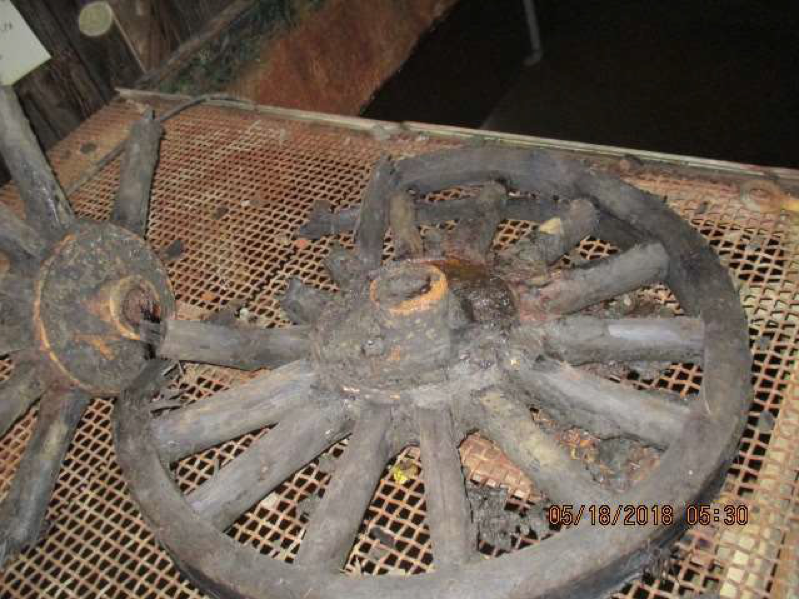
The two wagon wheels are currently being kept in liquid at the New Jersey site, Bream noted, to protect them from drying out, splintering, and flaking. “If we don’t keep them in a water environment until we get the salt and everything else out of them, they’ll just continue to flake away,” he explained.
“Really what we’re finding is the history of the industry around the canal. The artifacts themselves talk about that industry,” Bream said.
“While AHRS believes these are significant, there’s still discussion as to [whether they] are significant enough that we need to keep them or just record them and then recycle them,” he continued, noting that many of the recovered metal objects are being recycled.
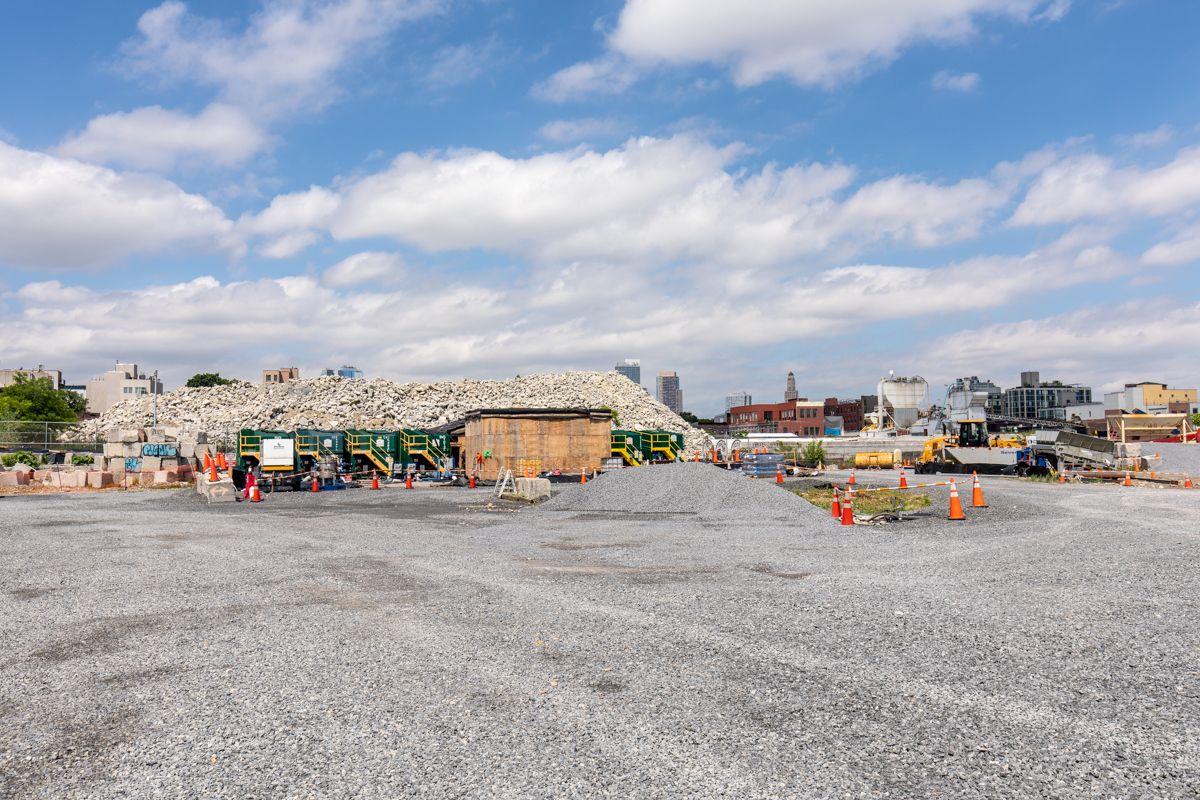
With the bulk of the dredging at the 4th Street Turning Basin completed (the capping process will begin in the coming weeks), Bream will be reviewing the debris to determine which items are historically and archeologically significant enough to keep.
AHRS will also need to determine where these significant pieces will ultimately end up, whether “to put them in a museum or someplace in the Gowanus Canal area to preserve them for the future,” he notes.
Members of the Gowanus Canal Community Advisory Group’s Archeology Committee would like the artifacts to be preserved and kept within the community.
“It’s important to the Gowanus Community that we have something to represent the artifacts, the history of the industrial age here and into the future,” said Linda Mariano, a member of the Archeology Committee and a Founding Member of FROGG (Friends & Residents of Greater Gowanus).
“Here in Gowanus we have nothing authentic, nothing to say that the American Revolution was fought here,” she added. “That’s what I want the archeologists to find…. relics and remnants of the American Revolution of 1776. It was the most important battle [The Battle of Brooklyn] of the revolution.”
“Of course the industry here is very important and yes, they found some artifacts to represent that and this is a good thing,” she continued. “We want more!”



